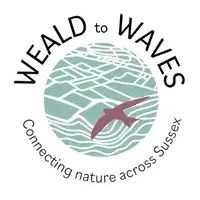Scrubland Superheroes: Can you help create habitat for Nightingales?
By Alex Briggs - 19 January 2024
For all the mythology surround their beautiful song, how many of us can boast that they have actually heard a Nightingale?
This species has disappeared from large areas of the countryside, due in part, to the loss of scrub habitat upon which it depends. However, Sussex and the Southeast are some of the few areas of England where Nightingales can be found. In certain areas such as Knepp, the number of territories has increased, and that is thanks to a change in attitudes to its habitat.
This modest, thorny habitat was once a valued part of rural life, with hawthorn, blackthorn, dog rose, and bramble providing important seasonal sources of haw berries, sloes, rosehips and blackberries. However, partially thanks to the Victorian ideas of gardening and tidiness, the appearance of thorny scrubland species can even be seen as a gardener or farmer failing to keep their land well-managed and tidy. With scrub being so stigmatised and its development prevented by high browsing pressure, this habitat can be hard to find.
Where to see scrub in Sussex?
There are several places in the corridor where you can appreciate scrub. Waterhall is an old golf course owned by Brighton and Hove City Council which is now managed to allow scrub and species-rich grassland to return, or visit the Sussex Wildlife Trust’s Butcherlands Nature Reserve. Part of the national interest in Knepp Wildlands has been thanks to the emergence of swathes of scrubland bringing a new appreciation for this hugely valuable habitat.
Of course, there are places where the encroachment of scrub can threaten rare or other valuable habitats, and work parties often spend hours clearing scrub from species-rich grassland. However, where this transitional habitat can be allowed to return, it brings a haven for a wide range of species. And there might just be new areas where scrub will start to appear in Sussex.
With funding from Natural England, we are very excited to have launched the Scrubland Superheroes Project within the Weald to Waves corridor. With carefully targeted habitat creation we are aiming to create a network of stepping stones along the corridor, to enable species like the Nightingale to thrive again in the landscape, and to open the door to the return of species like the Red-Backed Shrike, and the Black-Veined White butterfly. These two species have been lost as breeding residents in the UK, but with the help of landscape recovery projects, their return is becoming a possibility.
Could you be a Scrubland Superhero?
We are looking for landowners and managers interested in opportunities to create and enhance scrubland. Whether you think you might be interested in creating large core areas of habitat or smaller stepping stones, whether you are a gardener or a larger landowner, we want to hear from you.
Through this project we are funding advisory and monitoring support for creating and managing scrub, along with supporting capital works, such as planting and fencing. If you think this might be for you, sign up here:
Image credit: Dean Samsudin

